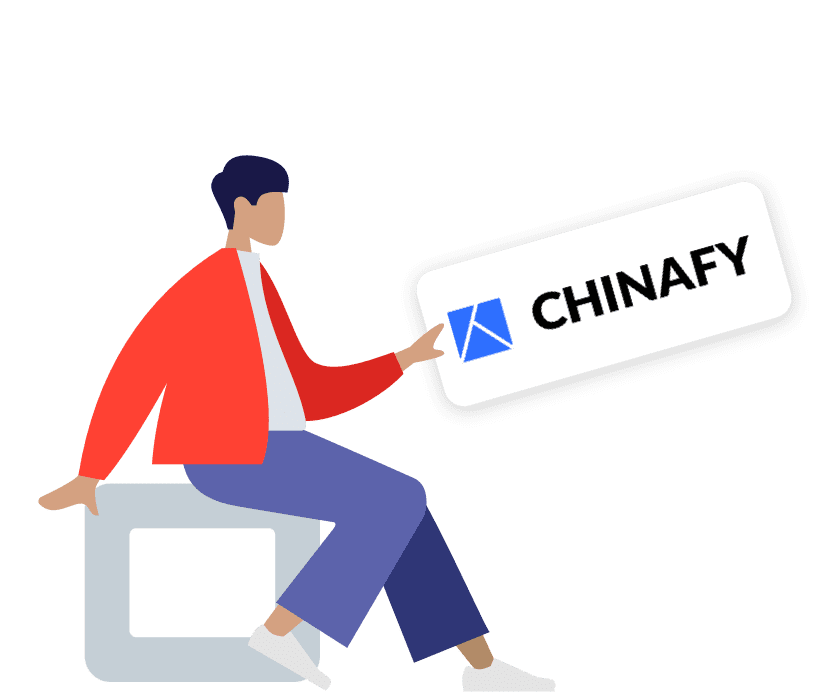1 - Expected post-Chinafy results
How to optimize APIs for China
APIs play a vital role in powering user experiences across websites and apps. However, when it comes to accessing APIs from China, performance bottlenecks often emerge, resulting in slow load times, broken features, or failed data retrieval.
This guide breaks down what APIs are, why they can underperform in China, and how to optimize them for a smoother, faster user experience in the region.
TL;DR: APIs allow different software systems to exchange data and are used on most modern websites and apps. But when these APIs are hosted outside of China, latency, throttling, and accessibility issues can affect their performance for users in China. Website owners can apply infrastructure, domain, and code-level strategies to improve reliability and speed. Chinafy offers a solution to address these challenges by making both websites and APIs faster, more accessible, and more reliable in China without rebuilding or relocating infrastructure.
What is an API?
An API (Application Programming Interface) is a set of rules and tools that allows different software applications to communicate with each other. For example,
How does an API work?
APIs follow a request-response model:
Request: A client (such as a browser or mobile app) sends a request to an API endpoint. This request typically includes the method (GET, POST, etc.), parameters, and authentication credentials.
Processing: The API server interprets the request, processes it, and interacts with the relevant backend systems, like databases or external services.
Response: The server returns a response, usually in JSON or XML format, with either the requested data or a status update (e.g., error or success).
Client use: The client uses the data to render content, trigger functions, or personalize the experience for the user.
Each step of this process can be impacted by factors such as internet latency or domain resolution delays. If website visitors in China are accessing APIs hosted outside of China, this can lead to significant delays.
There are two types of APIs:
First-party APIs are developed by the same organization that owns the application or service it interacts with, designed specifically for that service’s ecosystem.
One example is a WordPress site that uses the WordPress REST API to fetch blog posts for a custom mobile app. Website owners have greater control over first-party APIs, so there are more ways to manually optimize them for both global and China-based audiences.
Third-party APIs are created by an external organization, allowing developers to integrate external services into their own applications.
Using a Google Maps API on your WordPress website is an example of a third-party API. Website owners typically have no control over third-party API performance or optimization. In this case, it would be Google who has control over API performance, including downtime which can affect your website.
Understanding which type of API you're working with makes it easier to evaluate optimization strategies, especially when delivering dynamic content to users across different regions.
Do APIs work in China?
Yes, APIs can work in China, but their performance and reliability, especially for those hosted outside China, are impacted by China's unique internet infrastructure. APIs that are not optimized for China can introduce significant delays or even cause parts of a site to break for users in China.
Common challenges include:
Latency: API calls to foreign servers can add seconds to load times. This is especially disruptive for JavaScript-heavy sites making multiple calls (e.g., to api.example.com), where each delay compounds.
Read more about JavaScript in China
Blocking or throttling: Domains associated with restricted content or services may be throttled or blocked, causing API failures or degraded experiences.
Dynamic content loading issues: Websites relying on API data for key components (e.g., product listings, logins, user dashboards) may appear broken if API calls fail.
Reliability risks: Time-sensitive applications like live chat, e-commerce checkouts, or payment systems are particularly vulnerable to API latency or inconsistency.
How to optimize APIs for China
Optimizing APIs for China involves a mix of infrastructure decisions, domain configuration, and code-level strategies (or opt for Chinafy as a low-touch China web optimization solution).
*Disclaimer: This guide is informational and does not constitute legal advice. Chinafy is not a legal or corporate advisory entity, and, given that every business is different, we suggest consulting with your internal legal counsel if you would like advice on any legal or compliance-related concerns, or alternatively we can connect you with one of our partners.
Below are actionable ways to improve API reliability and performance for Chinese users. Note that all APIs behave differently and some of the options below may not apply to your stack. For specifics, please contact Chinafy via our Get started form.
1. Use China-friendly DNS providers
Choose DNS services with infrastructure in China (e.g., Alibaba Cloud DNS, DNSPod). Configure your DNS to prioritize local resolution for Chinese traffic, leveraging providers with Points of Presence (PoPs) in China to reduce latency.
2. Segment your API traffic
Use a separate subdomain like cn-api.example.com for Chinese traffic so as not to affect global users. Ensure the subdomain is hosted on infrastructure optimized for China to avoid cross-border latency and comply with local regulations. Note: If the subdomain is hosted on infrastructure inside mainland China or uses a China-based CDN, an ICP license is required.
3. Leverage China-accessible CDNs
Map your API domain to a CDN with edge nodes near or within China. CDNs like Tencent Cloud or Alibaba Cloud have edge nodes in China, but operating within mainland China mandates an ICP license.
4. Avoid legacy or associated-blocked domains
Ensure your API domain doesn’t share an IP address with blocked or high-risk services.
Use domain separation to isolate APIs from potentially impacted primary domains.
5. Add fallback mechanisms
Implement client-side fallback logic (e.g., retry mechanisms, cached data, or alternate endpoints like api2.example.com) to handle intermittent failures gracefully.
6. Deploy a dual-API architecture
Host one API inside China and another outside and use geolocation-based routing to direct users to the appropriate server automatically. Ensure the in-China API complies with local data residency and cybersecurity laws, such as the Cybersecurity Law (2017), which may require data localization.
7. Optimize API performance
Reduce the number of API calls per page. Compress responses and use modern, efficient protocols like HTTP/2 or gRPC. Prioritize lightweight payloads and client-side caching to minimize latency, especially for users where cross-border traffic can be slow, like in China.
8. Monitor and adjust regularly
Work with Chinafy to test API resolution, latency, and accessibility from inside China.
Track DNS lookup times and switch providers if performance degrades.
9. Load balance and scale
Distribute API servers across regions using global cloud providers (e.g., AWS, Azure). Implement load balancing to avoid server overload and ensure global availability.
The bigger picture: web performance in China
APIs are just one part of the bigger picture when it comes to cross-border web performance in China, so it’s important not to gloss over other major impacting factors. The two overarching reasons global websites face performance challenges in China are:
Infrastructure-based incompatibilities: China is often geographically distant from foreign data centers, resulting in high round-trip times. China’s internet infrastructure operates through a small number of state-affiliated ISPs with limited international interconnectivity and strict network controls. These factors create additional layers of congestion, packet loss, and unpredictable latency, making performance optimization for China uniquely complex compared to other regions.
Code-based incompatibilities: Many third-party services (e.g., Google Fonts, YouTube embeds, Facebook plugins) load slowly, incompletely, or not at all in China.
Resolving for both these incompatibilities can be complex and costly, which is where Chinafy comes in.
How Chinafy helps optimize API performance in China
Chinafy is a bolt-on solution that helps websites perform more efficiently in China, without requiring hosting or major codebase changes. Here’s how Chinafy works:
Generates a version of your website for China visitors without affecting your current site.
Identifies and remediates blocked or slow resources, including APIs. Chinafy handles first-party APIs using intelligent rule-based optimizations. For third-party APIs, Chinafy handling will depend on the nature of the API request and its code.
Adds a China-friendly CDN without changing your current hosting set-up.
If you’re hosting offshore, Chinafy routes China-IP-based traffic to the China-optimized version of your site without impacting global traffic which will still see your existing site. If you’re already hosting onshore, all your traffic will see the optimized version for China visitors.
Chinafy then keeps your China-optimized site in sync with your global one, so that any changes to content are reflected accordingly.
APIs are essential to delivering dynamic, personalized, and real-time web experiences. But when those APIs are not optimized for users in China, the entire experience can fall short, leading to lost trust, reduced engagement, and lower conversion rates.
Chinafy offers a low-maintenance way to optimize your APIs for China along with your entire site, without needing to overhaul your existing website or rebuild anything in China.
Ready to make your website work better in China? Connect with the Chinafy team to get started today.



1 - Expected post-Chinafy results






























